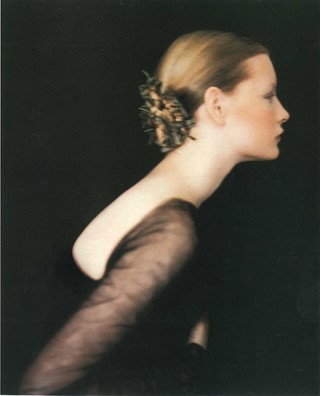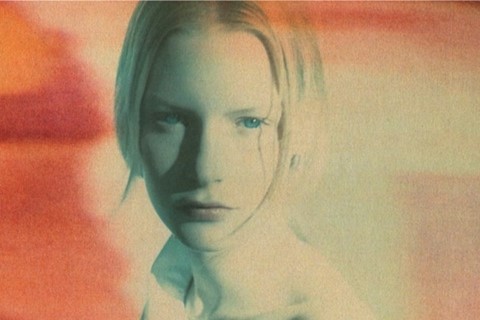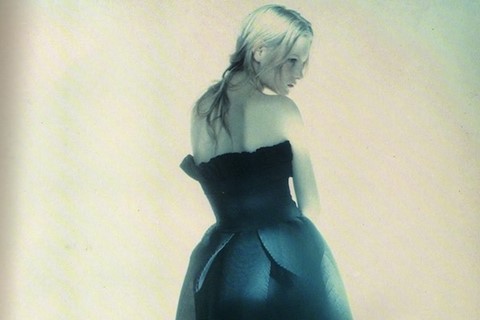My first campaign was with Paolo Roversi in 1985. We had met in Paris, but I was living in London at the time. I told him that I wanted to capture the fragility and sensuality of women, so we spent a lot of time trying to find models and searching
“My first campaign was with Paolo Roversi in 1985. We had met in Paris, but I was living in London at the time. I told him that I wanted to capture the fragility and sensuality of women, so we spent a lot of time trying to find models and searching for new faces. We were good friends, we spent four days on our first campaign, and we wanted it to be perfect. The season after we met in London, we were crossing the street and there was this girl playing a guitar. She was blonde with a beautiful strange face. He just went up to her and she told him that she had just arrived from Australia and that she was looking for money. So we asked her to come to the studio and we started to take pictures of her. We just met girls in that way, I guess I like the idea of finding people. It was Kirsten Owen, she was just fourteen-years-old and we found her on the street. Looking back, I have so many fond memories of working with Paolo, but one was a nightmare. We tried to make a movie, so we spent ten days working in Paris and girls were flying in and out on Concorde. Then, in the end there were no frames, they were all black and nothing had developed. It cost a fortune. I was always drawn to his ability to capture the private moment of those girls, and I wanted to underline his kind of attitude.
"I told Paolo Roversi that I wanted to capture the fragility and sensuality of women, so we spent a lot of time trying to find models and searching for new faces"
In my roots I am a traveller. I spent ten years traveling around the world before I became involved in fashion. The first trip I did was to India when I was seventeen. I left my school and my family and went to India, and India was magical in 1967. I wanted to shoot the JOYCE by Romeo Gigli collaboration campaign in Beijing where photographer Chen Man is based. I didn’t want to use models, but real people. I began this approach of finding people in the early nineties. I like faces, I like people and the idea of doing a new campaign with real people was exciting for me. JOYCE bought my first collection in 1984, and it felt like the right time to work on a collaboration with them. I was so impressed by the freedom they gave me, we were working together in a fantastic team and that was what I was dreaming of. We cast Charlie Casely-Hayford, Denni Elias, Ju Li Li and Matthew Avedon – grandson of Richard Avedon. I had a fantastic experience working with Richard Avedon on my summer 1988 campaign. When Tina Brown became editor of The New Yorker in 1992, she appointed Richard Avedon as their first staff photographer, before that they just used sketches. Then she shocked everybody because she decided to commission a big twelve-page shoot by Avedon featuring four designers – myself, Rei Kawakubo, Jean Paul Gaultier and Issey Miyake. It was built around this story of skeletons and girls in a big castle, flying around in an old library. At the launch of that issue I met Richard for the first time, he came up to me and told me I was his god. I was shocked, because he was my god.”
Romeo Gigli is best described as a romantic. He is looking back through his own archive on the twenty-sixth floor of an industrial building in the south island of Hong Kong, where he is tracing through each of his unique collaborations and his years of traveling. His early designs were inspired by the Renaissance, where he crafted soft romantic silhouettes in an attempt to capture the fragility of the women he discovered on the streets and on his travels. Paolo Roversi captured his first campaign in 1985 and set the tone for others, including Richard Avedon, Steven Meisel and most recently, a unique project with Chinese photographer Chen Man. The campaign with Man marked Gigli’s return to fashion (after leaving his own company in 2004) and the launch of a rare collaboration with luxury retailers JOYCE. The collection, titled JOYCE by Romeo Gigli, launched last week in Hong Kong, alongside a bold campaign that was photographed in Beijing featuring four international faces, each selected by Gigli and the JOYCE team. “If you look at how influential Romeo has been and how that poeticism, and romantic vision he has is so relevant and so exciting for now, certainly for us,” explains Andrew Keith, president of JOYCE. With the new collaboration in mind, AnOther asked Gigli to look back at his early campaigns, the act of collaborating and his memories of working with Richard Avedon and Paolo Roversi.
Text by Isabella Burley



